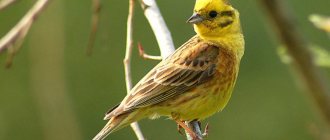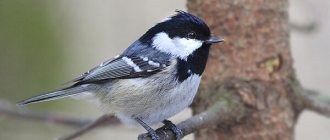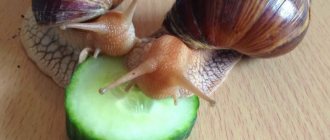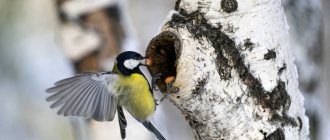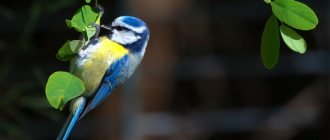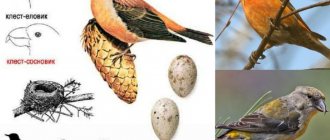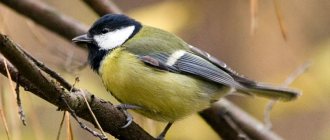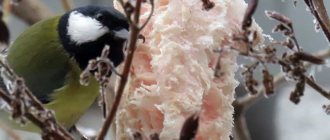Origin of the species and description
Photo: Tit
Tits are part of a fairly large family of tits. They are the largest representatives of the passerine order. The body length of a tit can reach fifteen centimeters. Previously, titmice were called “zinitsi”. The birds were so named because of the characteristic song of the animal, which sounds like “zin-zin.” Only a little later did the birds acquire their modern name, which comes from the characteristic shades of plumage. The name “tit” sounds almost the same among many peoples of Slavic origin.
These small, active birds have been highly valued at almost all times. Thus, there is a decree of King Louis of Bavaria, issued in the fourteenth century, which stipulates a strict ban on the destruction of tits. These birds were considered very useful; it was impossible to hunt them. The decree has survived to this day.
Today, the genus of tits includes four main species, which are divided into a large number of subspecies:
- gray tit. Its main external difference is the unusual color of its belly - gray or white. The natural habitat of this bird is the entire territory of Asia;
- highway This is the largest bird of the genus. Such birds have a very bright, cheerful color: yellow belly, black “tie”, bluish-gray or green plumage. Bolshaki are very common. They are found throughout Eurasia;
- greenback. Such birds are distinguished by their olive-colored tail, wings, and dull belly plumage;
- eastern In appearance, the animal looks the same as a gray tit. It has a gray belly, but lives in Sakhalin, Japan, and many countries of the Far East. Found in large numbers on the Kuril Islands.
general characteristics
Tits, members of the order Passeriformes, are usually distinguished by their large size and long tail. Their chest area is quite light compared to other plumage, usually yellow, beige or gray. The beak is short and sharp, the head has a cap and a crest.
The size of tits varies from 13 to 17 cm with a weight of 15 to 22 g. This determines the small wingspan, which is about 24 cm. The bird's head and neck area is black, there is an olive tint in the upper part, and a yellow color in the lower part. At the same time, there is a black stripe in the abdominal area. The cheeks are usually white, which stands out especially against the black background. The color of the plumage depends on the variety.
Appearance and features
Photo: Tit bird
A lively, relatively small bird that is easily recognizable. Most birds of this genus have a bright lemon belly, in the middle of which there is a longitudinal black stripe. Some species have gray and white belly plumage. The head has black plumage, white cheeks, olive back and wings. Tits are slightly larger than average sparrows. And the main difference from sparrows is their long tail. The body is about twenty centimeters long, the tail can reach seven centimeters. The weight of the bird is usually about sixteen grams.
Video: Tit
Birds of this species have large heads, but small round eyes. The iris of the eyes is usually dark in color. Only in certain varieties is it whitish or reddish. The head of the birds is decorated with a bright “cap”. Some species have a small crest. It is formed from elongated feathers that grow from the crown of the head.
Despite their relatively small size compared to other birds, tits are real “orderlies” of the forest. They destroy a huge number of harmful insects.
The beak is rounded on top and flattened on the sides. Externally, the beak looks like a cone. The nostrils are covered with feathers. They are bristly, almost invisible. The throat and part of the chest are painted black. However, they have a pleasant slightly bluish tint. The back is most often olive. Such an unusual, bright color makes little tits very beautiful. They look especially colorful against the background of white snow.
Tits have small but quite strong legs. The claws on the fingers are curved. Such paws and claws help the animal to better stay on the branches. The tail consists of twelve tail feathers, the wings, rounded at the end, are short in length. These birds are distinguished by their pulsating flight. They flap their wings several times, then fly by inertia. In this way, animals save their energy.
Grenadier
The tufted tit (the species also has this name) has a very noticeable difference from other tits, consisting in a long crest, which has a wide base and a sharp tip. The color of the grenadier's plumage is rather dull and has predominantly brown and red shades.
The wings and tail are dark brown, the back is slightly lighter. The sides and belly are grey-brown, and the breast is off-white. The crest on the head is made up of black feathers with white tips. Parallel black stripes run from the beak through the eye and from the crop to the back of the head, and the sides of the head are white.
The tufted tit is most common in the northern half of the European part of our country. Most often it can be found in coniferous forests from Arkhangelsk to Bashkiria. The grenadier tit is considered a particularly rare species of tit in the Caucasus. This species is not suitable for home keeping because its singing qualities are not so good.
Where does the tit live?
Photo: Tit animal
Tits can be found almost anywhere on our Earth.
The natural habitat includes the following regions and countries:
- Asia, Europe, Africa, America;
- Taiwan, Sunda, Philippine Islands;
- Ukraine, Poland, Moldova, Belarus, Russia.
Most of the tit population lives in Asia. About eleven species live in Russia and Ukraine. These birds cannot be found only in Central and South America, the Caribbean Islands, Madagascar, Antarctica, Australia, and New Guinea.
Representatives of this genus of birds prefer to live in open areas. They settle and build their nests near clearings, at the edge of the forest. They do not impose requirements on the type of forest. However, more often they can be found in mixed, deciduous forests. The habitat largely depends on the type of tit. Birds that inhabit Europe prefer to live in oak forests. Siberian tits are located closer to humans, somewhere on the outskirts of the taiga. In Mongolia, tits live in a semi-desert landscape.
These animals do not choose dark forests to build nests. They prefer to fly in forest-steppe zones, where there are reservoirs, rivers, and lakes not too far away. Also, representatives of the family can often be found in the mountains. Their largest population is in the Alps, in the Atlas Mountains. Animals do not rise above one thousand nine hundred and fifty meters above sea level.
Tits are non-migratory birds. This is due to their resistance to cold. They lead a nomadic lifestyle. When it gets cold, these animals simply move closer to people, because then they have a better chance of finding food.
Popular message topics
- Etiquette (types and rules)
The concept of “etiquette” is borrowed from the French language and includes all acceptable guidelines regarding behavior and appearance. These unspoken rules should be followed not only in public places, - Arctic seal
Cold waters of the seas and oceans wash many shores. These shores are home to their own local residents, various animals and birds. Among all the animals, the seal stands out. The seal amazes with its slowness and appearance. - Altai Nature Reserve
Our country is famous for its unique natural territories, which extend over thousands of kilometers. One of such objects is the Altai State Nature Reserve.
What does a tit eat?
Photo: Tit in flight
Tits are insectivorous animals. Despite their relatively small size, these birds effectively clear forests, gardens, parks, and vegetable gardens from a huge number of harmful insects. However, the diet of such birds also depends on the season. In winter, titmice mostly have to eat plant foods.
There are no insects in winter, so birds have to roam closer to human habitation. In winter, their diet consists of sunflower seeds, oats, white bread, and livestock feed. The birds' favorite treat is lard. They eat it only raw. To get food, birds sometimes even have to visit garbage dumps.
During the spring, summer and autumn periods, the diet of these birds includes the following insects:
- dragonflies, cockroaches, bedbugs;
- cicadas, golden beetles, ground beetles;
- longhorned beetles, sawflies, weevils, chafer beetles, leaf beetles;
- wasps and bees;
- ants, cabbage moths, silkworms, flies, horse flies;
- pine needles, flowers, rosehip seeds, various berries.
Tits are considered to be exclusively insectivorous animals. However, this is not quite true. Some species of birds deftly hunt, catch and eat small bats. These mice are especially defenseless in the short period after hibernation.
A very interesting feature is the hunting of these birds for invertebrate insects that hide under the bark. Tits hang upside down on branches, which allows them to quickly reach their prey. In one day, a little titmouse can consume about six hundred insects. The total weight of prey per day can be equal to the tit’s own weight.
Does the tit benefit humans?
Many people do not attach much importance to these birds, because all their work is not particularly visible to us humans with the naked eye. Despite this, the benefits of tits are colossal, because these small nimble birds are real pest fighters and their larvae.
- Just imagine, this inconspicuous bird can fly out of the nest about 300 times in 1 day in order to find food for itself and its chicks
- A gray flycatcher can fly out of its nest 500 times
- During these 300-500 flights, the bird brings about 300-600 different insects to the nest
- Even in a cold winter, the titmouse saves trees and the future harvest, because under the bark of trees it looks for pests and eats them
The tit saves trees even in winter
“Does the tit benefit humans?” - definitely brings and this benefit is very great, so people should also treat birds with respect and, if possible, feed them.
Features of character and lifestyle
Photo: Tit in Russia
Representatives of the tit family are very active animals. They are constantly on the move. They lead a social lifestyle, gathering in large flocks. One such flock can number about fifty individuals. Moreover, such flocks may also include birds of other species. For example, nuthatches. Birds split into pairs only during the mating season. At this time, the animals divide the feeding territory among themselves. About fifty meters are allocated for one couple.
Flying is not the titmouse's strong point. They are not hardy. However, this does not interfere with the life of the birds. In most cases, the animal's route consists of several trees and courtyards. The titmouse moves from one fence to another, from tree to tree. During the flight, the animal manages to profit by catching flying insects.
Tits are not migratory, but in most cases nomadic birds. With the onset of frost, they move closer to people's homes. However, sometimes migration is quite significant. Cases have been recorded when individuals ringed in Moscow were found in Europe. During daylight hours, tits look for food not only on trees and feeders. They often visit people's houses, flying onto balconies and loggias.
The character of titmouses is very cheerful, calm, and perky. They rarely get into trouble with other birds and animals. Tits are not embarrassed by the company of people. You can even feed them by hand. These animals can show aggression only during the period of feeding their offspring. They are quite angry and easily come into conflict with competitors, driving them out of their territory.
Brown-headed chickadee or puffy chickadee
Due to its dense build and short neck, this bird looks like a fluffy ball, which becomes even larger in inclement weather. Hence the second name for the tit. The puffy's cap is matte black, and the back, wings and rump are brownish-gray. The bird is listed in the Red Book of the capital under the second category of rarity.
Social structure and reproduction
Photo: Tit Birds
The nesting period for tits falls in early spring. In most areas of the natural range, it is quite cold in early spring, so birds insulate their nests so that future chicks do not freeze in them. Tits build a nest in pairs, then together they raise their offspring. Animals build nests in sparse forests, gardens, and parks. A large number of nests are found on river banks. Birds place their home at a height of two meters from the ground. They often occupy houses abandoned by other bird species.
During the mating season, tits turn into aggressive creatures. They deftly drive strangers away from their territory, protecting the nest. Animals build a nest from various twigs, grass, moss, and roots. The inside of the house is lined with wool, cobwebs, and cotton wool. At one time, the female can lay up to fifteen eggs. They are white and a little shiny. The surface of the eggs is covered with small brown spots. The bird lays eggs twice a year.
The eggs mature within thirteen days. The female incubates the eggs. The male at this time obtains food for his mate. After hatching, the female does not immediately leave the chicks. During the first days, the chicks are covered with only a small amount of fluff. The mother is engaged in warming her young. At this time, the male begins to get food for the whole family.
Newly born tits are extremely voracious, just like adult birds. Parents have to feed them about forty times an hour.
Chicks become independent only seventeen days after birth. However, they do not immediately leave their parents. For about nine days, young titmice try to stay close. Ten months after birth, the young reach sexual maturity.
Features of keeping in captivity
Tits are very friendly birds and can be tamed if desired. According to statistics, in captivity a bird can live up to 15 years.
Cells
If somehow a tit appears at home, it needs to create favorable conditions for its existence. The cage should be spacious, measuring 45x30x45 cm. It should be comfortable, reliable and durable.
It is better to install the cage so that the bird is not exposed to direct sunlight. It should be away from drafts, electric and gas appliances.
The cage should be spacious
Feed
It is not difficult to select food for a tit in captivity. The basis of the menu should be soft food, which consists of:
- grated carrots;
- chopped chicken egg;
- minced meat or fish;
- white breadcrumbs;
- low-fat cottage cheese.
You can add ant eggs, dry insects, and mealyworms to soft food.
You can also feed raw seeds and chopped nuts. The grain mixture is fed to the bird as a separate treat and poured into a separate feeder. Occasionally, a tit can be pampered with fresh lard and meat scraps. There should be clean water in the cage: one container for drinking, the other for bathing. Feed the bird 2 times a day, morning and evening.
Important! If a tit is released from its cage, it will get its own food: open a carton of milk or feast on a treat from the table.
Breeding at home
To breed tits at home, a pair is placed in a spacious cage or aviary. Tits are birds with character, so often the male and female begin to conflict. Then the couple is placed in separate cages for a while. When the male begins to sing calling songs, the pair is united, and a nesting house is placed in the birds’ home. As a rule, a couple thinks about offspring in early spring, in April.
Note! If other birds live in the room, tits will not mate.
The female can lay up to 15 eggs
Natural enemies of tits
Photo: Tit in Moscow
Tits are agile, fast birds. They do not often become victims of animals, birds and people. Catching a tit is not so easy. However, the titmouse is a tasty prey for many birds of prey. They are attacked by owls, eagle owls, barn owls, kites, eagles, and golden eagles. Woodpeckers can also be called an enemy. Woodpeckers are busy destroying nests.
Squirrels, wryneck birds, and ants also damage and destroy nests. Often tits die from fleas. Flea colonies may take up residence in the nest. Then young chicks may die from their exposure. Martens, ferrets and weasels actively hunt small birds. These animals deftly catch tits, despite their mobility. Most often this happens when the bird is collecting material to build its nest or is distracted by eating food. If the titmouse does not die from the paws of predators, then it can live in the forest for about three years. In captivity, life expectancy can be more than ten years.
As you can see, tits do not have many natural enemies. However, there are other factors that lead these birds to death. 90% of the time it's hunger. A very large number of birds die in winter, when there is no way to get insects or plant food for nutrition. Frosts are not scary for tits if the bird is well-fed. For this reason, it is very important to make and fill animal feeders on time.
Interesting answers
- Pushkin's childhood in brief - message report
Childhood is the best time in the life of almost every person. What was seen and heard at that time is remembered forever. For example, vivid childhood impressions, as well as fairy tales, songs of grandmother and nanny, stories of Nikita Kozlov - The life and work of Ivan Krylov - report message
In 1769, on February 13, a son, Ivan, was born into the family of a retired army officer Andrei Krylov. Due to the frequent moves of his family, as well as due to lack of funds, he did not receive a proper education. - Music
- Safety on water bodies - message-report
As soon as summer begins, you need to think about safety. Many people like to swim in rivers and ponds in the summer. It doesn’t matter what type of reservoir you need to know and follow special rules of conduct and safety measures. - Panda - message report
Panda is a mammal. Color black and white. Despite the fact that the panda is a bear, it has the characteristics of a raccoon. Omnivorous, but mainly feeds on bamboo
